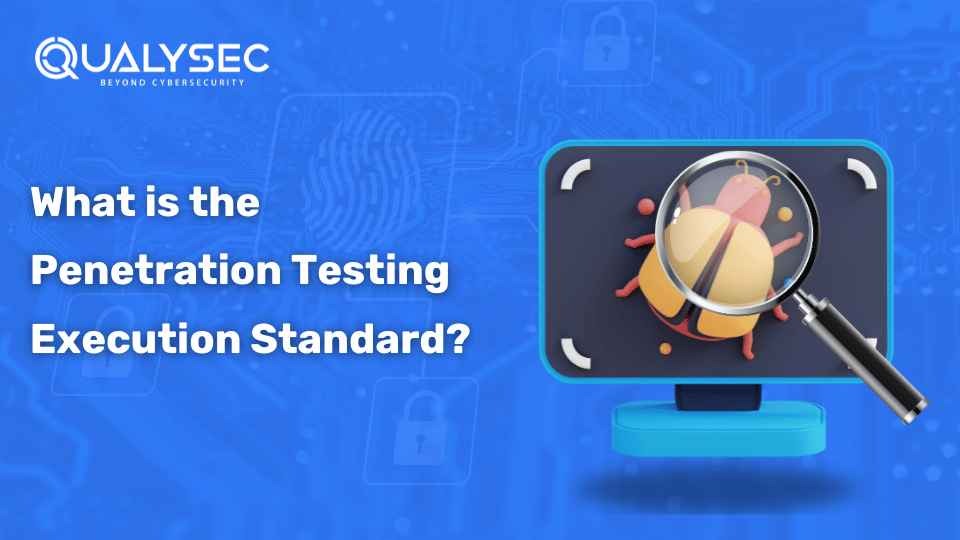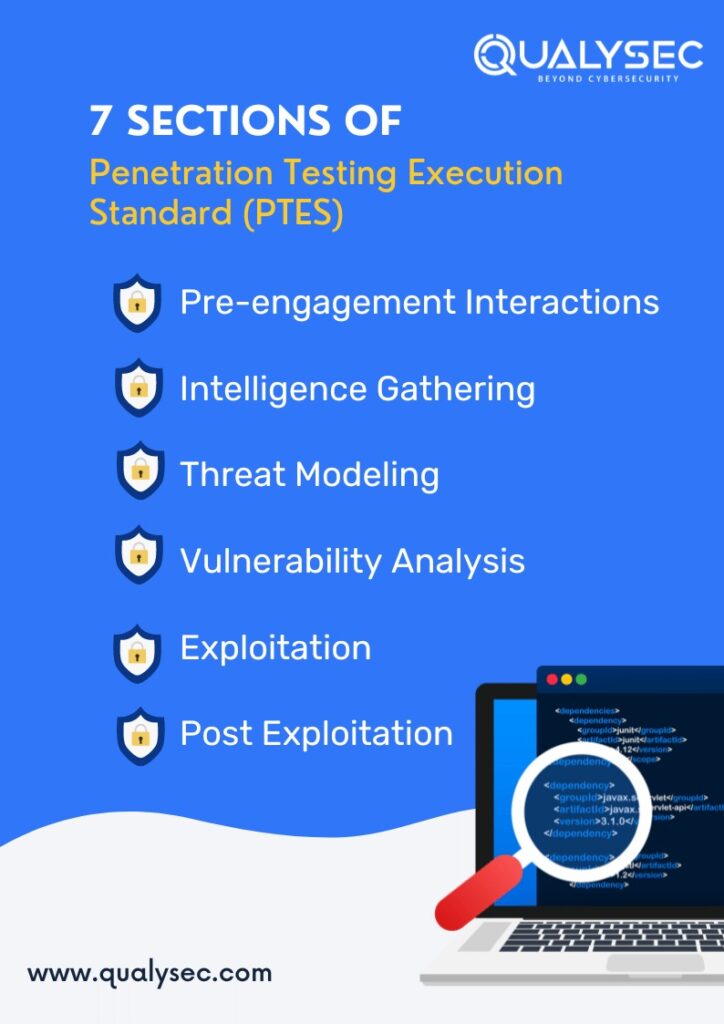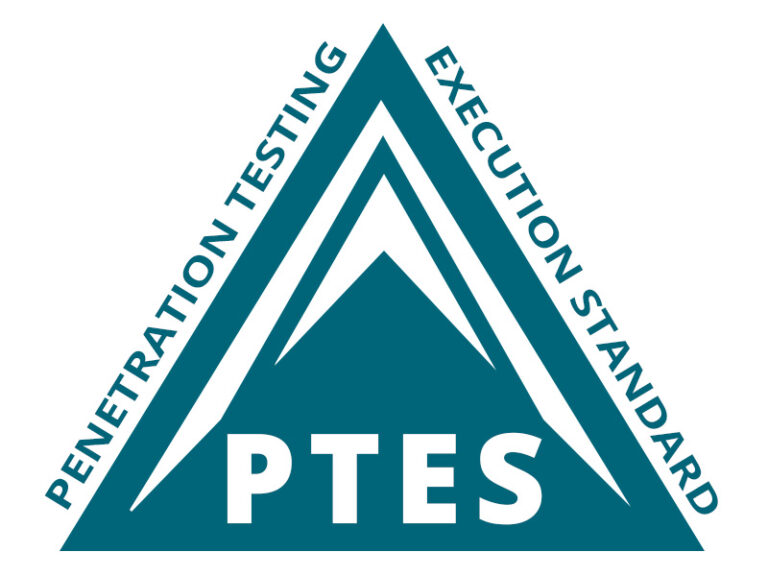Introduction to Penetration Testing Execution Standard (PTES)
As organizations increasingly rely on technology, the need for effective cybersecurity measures has never been more pressing. One vital method of ensuring robust security is through penetration testing. This is where the Penetration Testing Execution Standard (PTES) comes into play.
Overview of PTES Framework
The PTES framework serves as a comprehensive guideline, outlining the best practice stages of penetration testing. It consists of several phases, including:
- Pre-engagement Activities: Setting clear expectations between testers and stakeholders.
- Intelligence Gathering: Collecting data to identify potential vulnerabilities.
- Exploitation and Privilege Escalation: Actively testing the system’s defenses.
- Post Exploitation and Reporting: Documenting findings and offering recommendations.
This structured approach provides clarity and ensures that penetration tests are thorough and effective.
Importance of Following PTES Guidelines
Adhering to PTES guidelines is essential for various reasons:
- Consistency: Establishes a reliable methodology to follow.
- Efficiency: Reduces the time required to set up and conduct tests.
- Accountability: Fosters a clear communication channel between testers and stakeholders.
By utilizing the PTES framework, organizations can strengthen their security posture, ultimately protecting themselves from evolving cyber threats.

Understanding the Phases of Penetration Testing
Pre-engagement Activities
Before diving into the nuts and bolts of penetration testing, pre-engagement activities lay the foundation for a successful assessment. These activities involve essential discussions and agreements between the penetration testing team and the client. Key elements include:
- Defining Objectives: What is the client hoping to achieve? Identifying goals helps tailor the testing process.
- Establishing Rules of Engagement: Clarity on what targets are in scope, what permissible methods, and understanding the boundaries.
- Resource Allocation: Both parties should agree on the tools, personnel, and timeframe.
For example, one time during a testing engagement, our team and the client spent several hours hammering out these details, which ultimately streamlined the testing process and ensured everyone was on the same page.
Intelligence Gathering
Once the pre-engagement activities are set, the next phase—intelligence gathering—focuses on collecting information about the target system. This phase can be categorized into two techniques:
- Passive Information Gathering: Involves collecting data without directly interacting with the target. Techniques include:
- Social media investigation
- WHOIS lookups
- Examining public records
- Active Information Gathering: This approach involves direct interaction with the target, such as:
- Network scanning
- Port scanning
By leveraging these methods, testers can build a comprehensive profile of their target systems, enabling them to identify potential vulnerabilities and risks effectively.

Continuing from the earlier phases of penetration testing, the next critical elements involve scoping and planning. These stages are essential to ensure the test is targeted, efficient, and aligned with the organization’s security goals.
Defining the Scope of a Penetration Test
Defining the scope is like drawing the boundaries of a battlefield. It involves determining what is included and excluded in the penetration test. Key factors to consider include:
- Assets to Test: Identify which systems, networks, or applications will be assessed.
- Test Limitations: Clearly outline any restrictions, such as excluded IP ranges or specific functionalities that should not be tested.
- Timeframe: Establish deadlines for the testing process to ensure it aligns with business operations.
For example, when I worked with a financial institution, we focused solely on their customer-facing web applications, which were critical to their operations.
Planning the Attack Strategy
Once the scope is defined, the next step is strategizing the attack approach. This involves:
- Attack Vectors: Deciding which techniques and methods will be employed, such as social engineering, network attacks, or web application testing.
- Resource Allocation: Assigning team members with appropriate skills to tackle various aspects of the test.
A well-laid attack strategy enhances preparedness and ensures effective outcomes during the testing phase.
Continuing from the foundational phases of penetration testing, the next crucial step involves reconnaissance and information gathering. This phase is pivotal for understanding the target’s environment, pinpointing weaknesses, and drafting an effective strategy for a successful engagement.
Passive Information Gathering Techniques
Passive information gathering is about gathering data without directly interacting with the target system. Think of it as a stealthy observer collecting valuable intel. Some common techniques include:
- WHOIS Lookups: Discovering domain registration details to identify contact information and potential entry points.
- Social Media Mining: Scrutinizing a target’s social media profiles for insights into employee behavior and internal processes.
- Publicly Available Information: Analyzing company websites, forums, and online archives can unearth a wealth of information—such as architecture and software in use.
Active Information Gathering Techniques
On the other hand, active information gathering involves directly interacting with the target to obtain data and often provides more detailed insights. Examples include:
- Port Scanning: Using tools like Nmap to discover open ports and services running on a target machine.
- Vulnerability Scanning: Actively probing systems for known weaknesses using specialized tools such as Nessus or OpenVAS.
- Network Mapping: Creating a topology of how different assets within a network interact.
Both passive and active techniques play a vital role. They allow penetration testers to build a comprehensive profile of the target before actual testing begins.
Continuing from the exploitation phase, the Vulnerability Analysis and Assessment is the next crucial step in the penetration testing. This phase focuses on identifying and understanding the weaknesses within the target system that could be exploited.
Identifying vulnerabilities in the target system
To effectively identify vulnerabilities, penetration testers leverage a variety of tools and techniques, including:
- Automated Scanning Tools: Tools like Nessus or OpenVAS scan the system for known vulnerabilities.
- Manual Testing: Skilled testers conduct manual assessments to find vulnerabilities that automated tools might miss.
- Code Review: In cases where the source code is accessible, a thorough code review can uncover security flaws.
As a personal anecdote, during a recent assessment, a tester uncovered a critical SQL injection vulnerability that automated tools failed to detect, highlighting the importance of manual methods.
Assessing the severity of vulnerabilities
Once vulnerabilities are identified, the next step is assessing their severity. This is typically done using:
- Common Vulnerability Scoring System (CVSS) scores, which categorize vulnerabilities based on metrics like potential impact and exploitability.
- Risk Assessment Frameworks, which consider the context of the target system and the business’s specific risks.
Testers will classify vulnerabilities into low, medium, and high severity categories to prioritize remediation efforts effectively. This structured approach ensures that critical security issues are addressed promptly, ultimately minimizing potential damage.
Exploitation and Privilege Escalation
Exploiting Discovered Vulnerabilities
Once vulnerabilities have been identified during the assessment phase, the next crucial step involves exploiting these weaknesses. In this stage, penetration testers demonstrate how vulnerable a system is by simulating an attack. For example, if an outdated software version is identified, the tester might use a known exploit to gain unauthorized access. Such exploits can vary widely and might include:
- SQL Injection: Manipulating a web application’s database queries.
- Cross-Site Scripting (XSS): Injecting malicious scripts into web pages viewed by users.
- Buffer Overflow: Overwriting memory to execute arbitrary code.
Effective exploitation allows penetration testers to gain deeper insights into an organisation’s security posture and provides proof of concept for vulnerabilities.
Escalating Privileges to Gain Access
After successfully exploiting a vulnerability, the next goal is privilege escalation — a technique used to gain higher access levels within the system. This might involve:
- Using default credentials: Many systems are misconfigured with unchanged default passwords that can be exploited.
- Exploiting misconfigurations: An improperly set Role-Based Access Control (RBAC) can allow access to sensitive information.
An anecdote here would be a tester who discovered that an organization’s web application was running with elevated rights due to a misconfigured server. By escalating privileges, they were able to access confidential files that were previously thought secure, showcasing the importance of stringent security practices. Overall, this phase is integral, revealing the extent of vulnerabilities that require remediation to safeguard organizational assets.
Post Exploitation and Reporting
Maintaining access to the target system
Once the initial exploitation phase has successfully compromised the target system, the next critical step is maintaining access. This involves establishing backdoors or creating user accounts that allow the penetration tester to return later if necessary. It’s crucial to do this discreetly to avoid detection. For instance, in a recent penetration test, maintaining access meant setting up a secure shell (SSH) tunnel that was encrypted and disguised. This method minimizes the chances of raising alarms while allowing the tester to conduct further assessments without repeated exploitation efforts. Key strategies for maintaining access include:
- Creating Persistent User Accounts: Breaching systems create accounts with minimal detection.
- Deploying Web Shells: These allow for remote access through web interfaces.
Reporting findings and recommended actions
After ensuring access, the culmination of the penetration test leads to meticulous reporting. This report serves multiple purposes: documenting vulnerabilities, providing insights on the testing process, and offering actionable recommendations for remediation. An effective report should include:
- Executive Summary: A high-level overview for stakeholders.
- Detailed Findings: Including vulnerabilities and exploit methods.
- Risk Assessments: Severity ratings for each vulnerability.
- Recommended Actions: Clear, actionable steps for remediation.
The ultimate goal is not just to expose weaknesses but to facilitate improvements that enhance the organization’s security posture. An engaged conversation about the findings during debriefings can turn technical jargon into strategic decisions that protect the organization.
Wrapping Up Penetration Testing
Finalizing the Penetration Testing Process
Once the testing activities have been completed, effectively wrapping up the penetration testing process is paramount. This involves several key steps that ensure all findings are documented and communicated accurately. First, testers should compile all findings into a structured report. This report should include:
- A summary of the engagement
- Detailed vulnerability descriptions
- Evidence of exploitation
- Recommended remediations
Moreover, organizing the data visually through graphs or tables can enhance comprehension for less technically inclined stakeholders.
Conducting Debriefings with Stakeholders
After finalizing the report, conducting debriefings with stakeholders is essential. These debriefings should encompass discussions about the vulnerabilities discovered, their implications, and actionable insights going forward. During a recent project, the team organized a debriefing session with various departmental heads. By presenting critical findings through visual aids, those unfamiliar with technical jargon could grasp the risks posed to their areas. Key takeaways from these sessions include:
- Understanding the potential impact on business operations
- Collaborating on prioritizing remediation efforts
- Establishing a plan for continuous security improvements
This collective reflection helps foster a culture of security awareness within the organization, ensuring that lessons learned are applied to future assessments.




